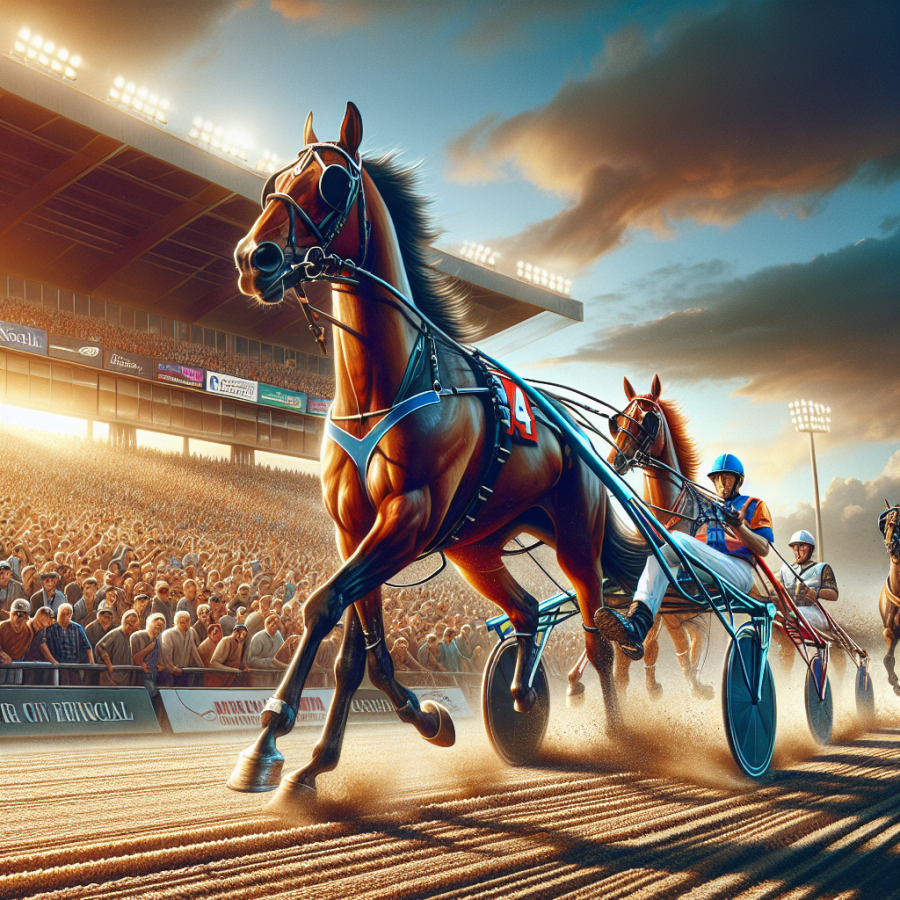Mastering the Art of Strategy in Harness Racing
Harness racing is a captivating sport that combines the excitement of speed with the complexities of strategy. To master the art of strategy in harness racing, enthusiasts must delve into several critical aspects that can potentially influence the outcome of a race.
Understanding the Horse: Each standardbred has its unique strengths and weaknesses. A keen insight into a horse's stamina, sprinting ability, and preferred racing distance is essential. Mastery of strategy begins with selecting a horse that has the physical capabilities to execute the planned tactics effectively.
Track Position and the Starting Gate: In harness racing, the starting position can significantly impact a horse's ability to take the lead or tuck in behind the pacemakers. Being on the inside track can be advantageous, but it requires quick reaction time at the start. Knowing when to press for position and when to conserve energy for the final stretch is a vital strategic consideration.
Driver Tactics: The driver plays a critical role in harness racing strategy. Their ability to read the race, anticipate competitors' moves, and make split-second decisions is paramount. Crafting a race plan involves deciding when to hold back or surge forward, when to take the inside route or swing wide for a clear run, and understanding how to rate a horse's speed throughout the race to avoid fatigue.
Equipment Choices: Harness racing equipment, from the sulky to the bridle, can significantly influence a horse's performance. Selecting the appropriate gear is a strategic decision that reflects the track conditions, the horse's gait, and comfort. For instance, certain bits may be employed to control pace or encourage breathability, while various types of shoes can assist with traction.
The Role of Pace: Pace strategy is all about dictating or disrupting the tempo of the race. Whether aiming to set a blistering pace that tires out the competition or drafting behind the leaders to conserve energy, strategists need to understand pace psychology and implement it to their advantage.
Race Conditions: The state of the track and the weather conditions on race day can dramatically alter the outcome of a race. A savvy strategist interprets these factors, adapting the racing plan to suit the conditions. A wet track might slow down a race, while a dry, fast track might encourage a speedier strategy.
Training and Conditioning: Behind every great harness racing strategy is a rigorous training regimen. By conditioning horses to peak physical fitness and mentally preparing them for the rigours of racing, trainers lay the groundwork for strategic success.
Read also:
Navigating Through Life's Varied Obstacles: A Closer Look
The Role of Speed: Harness Racing's Heart-Pounding Excitement
In harness racing, the role of speed is not just a significant factor but the pulsating core of the sport's allure. Unlike thoroughbred racing, where raw pace often dominates, harness racing injects a tactical depth, with speed being both a weapon and a potential pitfall for pacers and trotters alike. The intricacies of strategy intertwined with the requisite quickness of the standardbred horses make for an enthralling spectacle that captivates fans and participants.
The tempo of a harness race is set from the moment the mobile gate springs open or the starting car accelerates away, and horses vie for advantageous positions. Drivers must be acutely aware of their horse's capabilities—understanding the fine balance between conserving energy and making decisive moves at the right moments. It’s about knowing when to hold back and when to ask for that extra surge that can propel them to the front.
Speed management is critical. Going too fast, too soon, can burn out a horse, leaving it vulnerable in the final stretch. Conversely, leaving the sprint too late may make the task insurmountable, as the leaders can be uncatchable if they've set a manageable pace and conserved their energy throughout. This game of cat and mouse is where the driver's strategic prowess truly shines, as they must make split-second decisions that could either lead to victory or consign them to the back of the pack.
Over the course of a race, speed comes into play most dramatically during the quarters, especially the last quarter, where horses often kick into their highest gear. Watching a horse come from behind with a burst of acceleration to challenge the leaders is one of the most electrifying moments in sports. The crowd's anticipation builds as they witness the battle unfolding, with horses and drivers pushing their limits, attempting to outpace their rivals in a high-speed dance that is as strategic as it is primal.
The importance of speed is also accentuated in harness racing by the positioning of the horses. Those able to secure a spot on the inside track have a shorter distance to travel, but they may also get boxed in by other competitors, unable to find the space to unleash their full speed when it counts. On the other hand, horses on the outside may have more room to maneuver but must travel further, requiring even greater speed to overtake those on the inside.
Breeding also plays a central role in the equation of speed.




